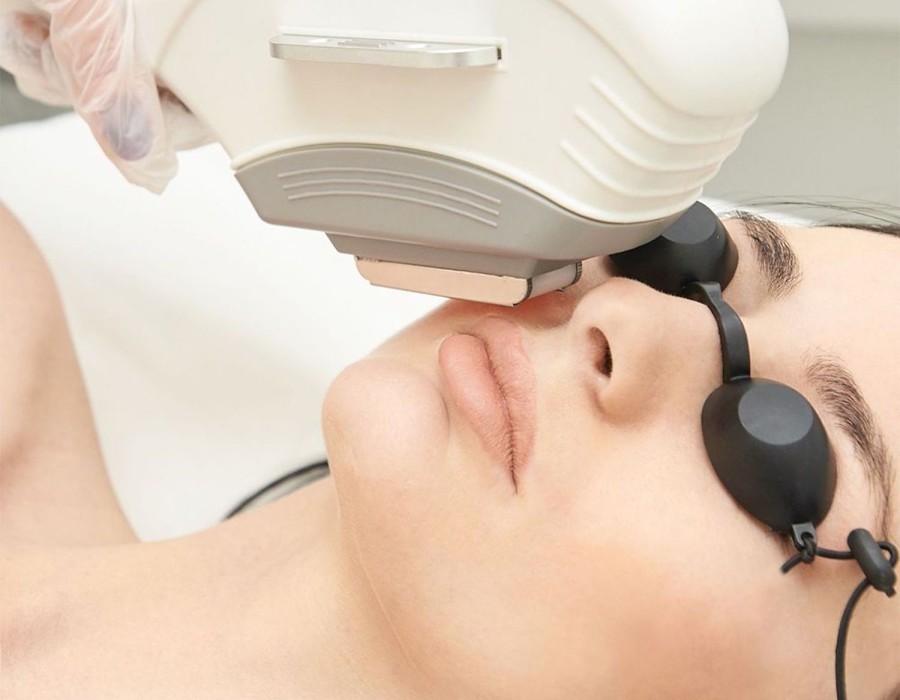Electrolysis and Laser Hair Removal Dubai are popular methods for achieving smooth, hair-free skin, each with its considerations regarding discomfort during treatment and effectiveness in delivering desired results. Understanding the balance between pain and outcomes can help in choosing the most suitable hair removal method based on personal preferences and tolerance levels.
Electrolysis: Pain and Results:
Pain Considerations:
- Sensation: Electrolysis involves inserting a fine probe into each hair follicle to deliver a small electric current, which can cause a sensation often described as a stinging or pricking feeling. The intensity of discomfort can vary depending on individual pain tolerance and the treatment area's sensitivity.
- Localized Discomfort: While electrolysis is generally well-tolerated, the discomfort is more noticeable in sensitive areas such as the upper lip, eyebrows, or bikini line. Topical numbing creams may be applied before treatment to minimize discomfort, especially for those with lower pain thresholds.
Results:
- Permanent Hair Removal: Electrolysis is the only FDA-approved method for achieving permanent hair removal. It targets and destroys the hair follicle's growth center (papilla), preventing future hair regrowth in treated follicles. This makes electrolysis highly effective for individuals seeking long-term results without the need for ongoing maintenance treatments.
- Session Frequency: Achieving permanent results with electrolysis requires multiple sessions spaced over several months. The number of sessions depends on factors such as the treatment area size, hair density, and individual hair growth cycles. Consistency in treatment schedules is crucial for optimal results.
- Precision and Versatility: Electrolysis is ideal for treating smaller, targeted areas with precision, making it suitable for shaping eyebrows, removing facial hair, and addressing specific hair growth concerns in sensitive areas.
Laser Hair Removal: Pain and Results:
Pain Considerations:
- Sensation: Laser hair removal involves emitting pulses of concentrated light energy into hair follicles, which can cause a sensation often likened to a snapping rubber band or mild discomfort. Advanced laser systems incorporate cooling mechanisms to minimize discomfort and protect the skin's surface during treatment.
- Tolerance Variability: Pain perception during laser hair removal varies among individuals and depends on factors such as skin sensitivity, treatment area, and the specific laser technology used. Most people find the discomfort tolerable and manageable with cooling techniques.
Results:
- Long-term Reduction: Laser hair removal offers significant reduction in hair growth by targeting melanin in the hair follicle, inhibiting future hair growth. While not always classified as permanent, it provides prolonged periods of smooth skin with reduced hair density and finer regrowth.
- Hair and Skin Compatibility: Laser hair removal is most effective on individuals with darker hair against lighter skin tones due to the contrast in melanin absorption. Advances in laser technology, such as Nd
- lasers have expanded their effectiveness to include a wider range of skin tones while minimizing risks of side effects.
- Maintenance Treatments: To maintain optimal results, periodic maintenance treatments may be required after completing the initial series of laser sessions. The frequency of maintenance sessions varies among individuals but is typically less frequent than initial treatment sessions.
Balancing Pain and Results:
Choosing between electrolysis and laser hair removal involves balancing the discomfort experienced during treatment with the desired outcomes in hair reduction or removal:
- Permanent vs. Long-term Reduction: Electrolysis offers permanent hair removal, making it suitable for those prioritizing definitive results with fewer ongoing treatments. Laser hair removal provides a significant, long-term reduction in hair growth, requiring occasional maintenance sessions.
- Personal Preference: Consider your pain tolerance, treatment goals, skin type, and hair characteristics when selecting a hair removal method. Consulting with a qualified practitioner can help assess these factors and recommend the most suitable treatment option tailored to your needs.
Conclusion:
Both electrolysis and laser hair removal are effective methods for achieving smoother, hair-free skin, with considerations for pain tolerance and desired outcomes. Electrolysis provides permanent results with a manageable level of discomfort, ideal for precise hair removal in smaller areas. Laser hair removal offers a long-term reduction in hair growth with minimal discomfort, suitable for larger treatment areas and a wider range of skin tones. By understanding the balance between pain and results, individuals can make informed decisions to achieve their hair removal goals effectively and comfortably.





Comments